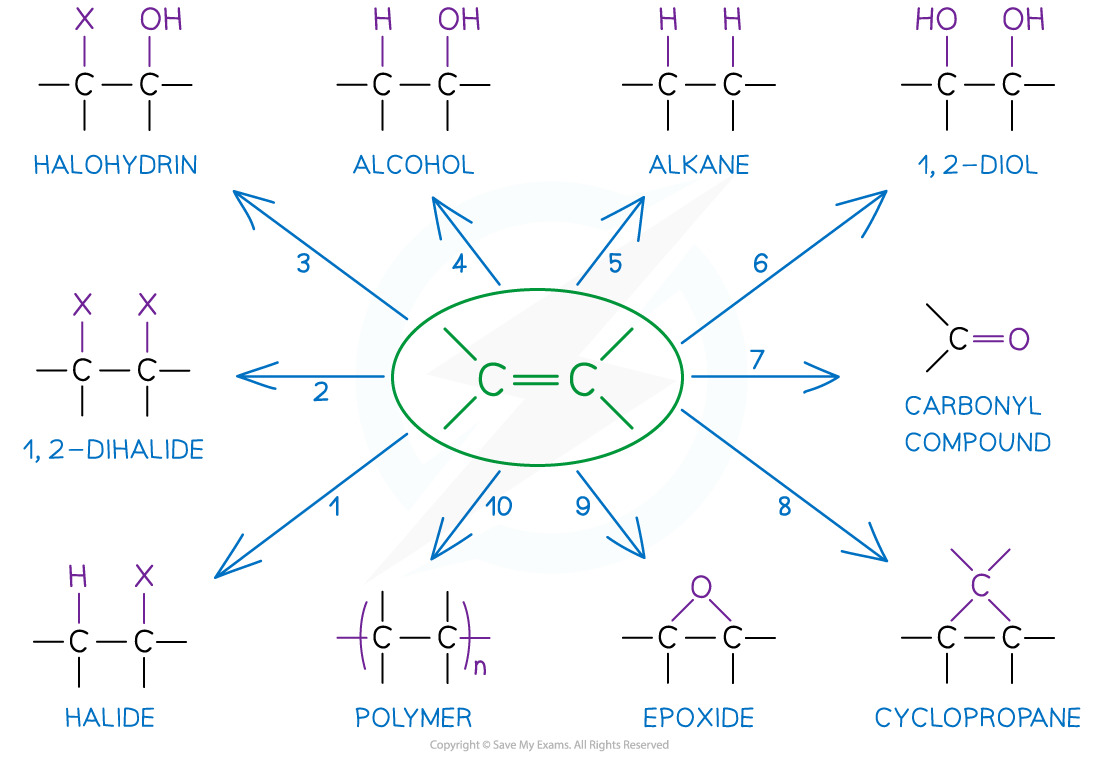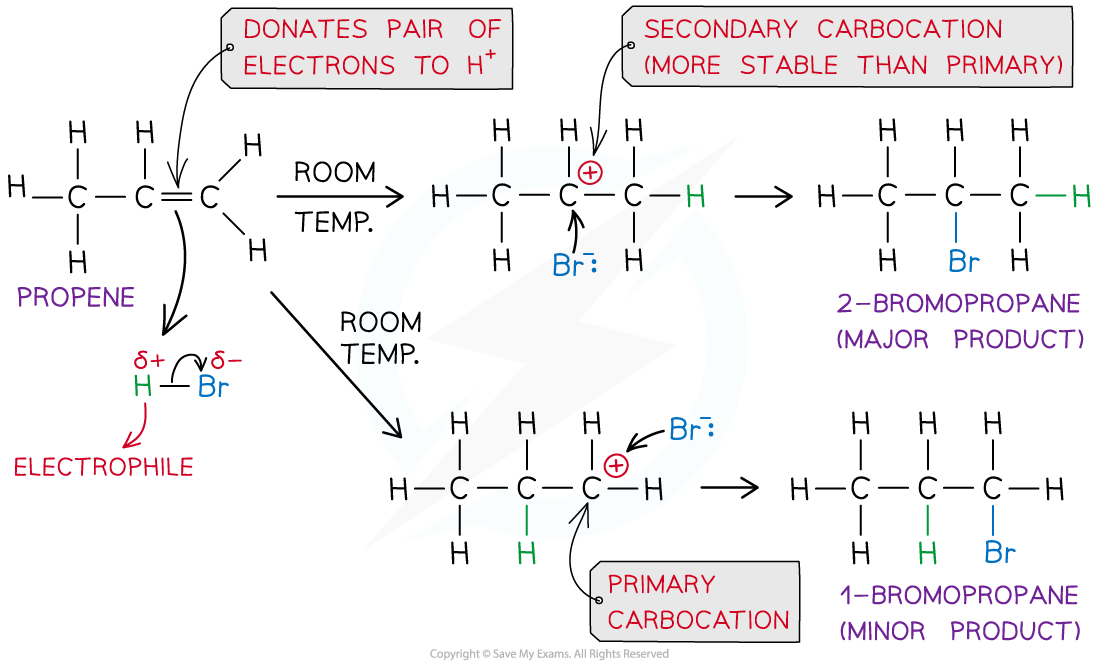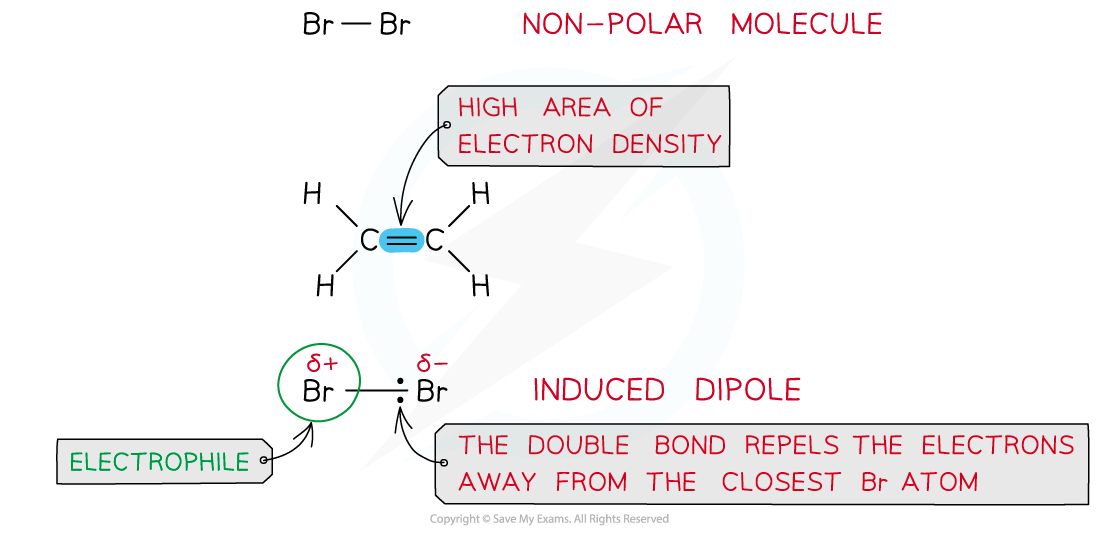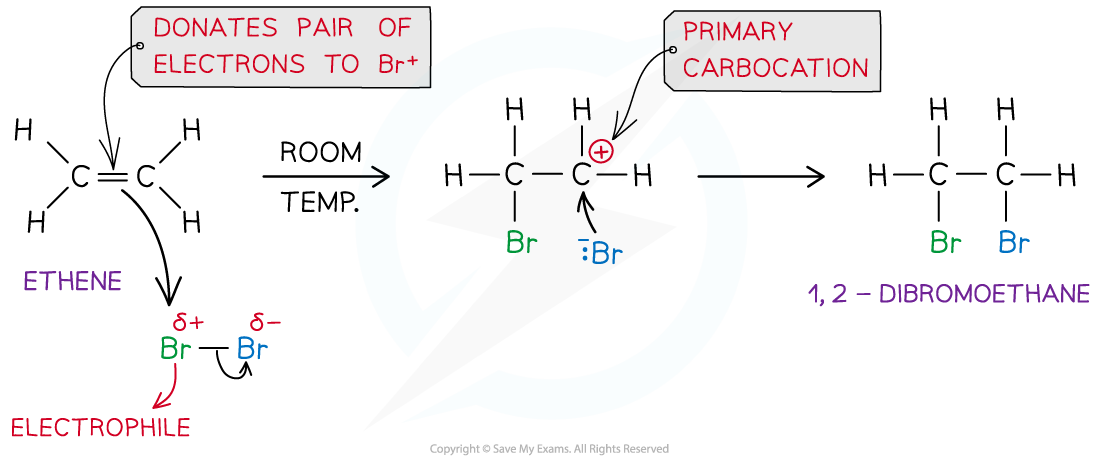- 翰林提供学术活动、国际课程、科研项目一站式留学背景提升服务!
- 400 888 0080
AQA A Level Chemistry复习笔记3.4.3 Reactions of Alkenes
Alkenes: Reactions
- Alkenes are very useful compounds as they can undergo many types of reactions
- They can therefore be used as starting molecules when making new compounds

Electrophilic addition
- Electrophilic addition is the addition of an electrophile to a double bond
- The C=C double bond is broken, and a new single bond is formed from each of the two carbon atoms
- Electrophilic addition reactions include the addition of:
- Steam (H2O (g))
- Hydrogen halide (HX)
- Halogen

The diagram shows an overview of the different electrophilic addition reactions alkenes can undergo
Electrophilic Addition
- The double bond in alkenes is an area of high electron density (there are four electrons found in this double bond)
- This makes the double bond susceptible to attack by electrophiles (electron-loving species)
- An electrophilic addition is the addition of an electrophile to a double bond
Electrophilic addition of hydrogen bromide
- A molecule of hydrogen bromide (HBr) is polar as the hydrogen and bromine atoms have different electronegativities
- The bromine atom has a stronger pull on the electrons in the H-Br bond
- As a result of this, the Br atom has a partial negative and the H atom a partial positive charge

Due to differences in electronegativities of the hydrogen and bromine atom, HBr is a polar molecule
- In an addition reaction, the H atom acts as an electrophile and accepts a pair of electrons from the C=C bond in the alkene
- The H-Br bond breaks heterolytically, forming a Br- ion
- This result in the formation of a highly reactive carbocation intermediate which reacts with the Br- (nucleophile)

Example of an electrophilic addition reaction of HBr and propene to form 1-bromopropane and 2-bromopropane
Electrophilic addition of bromine
- Bromine (Br2) is a non-polar molecule as both atoms have similar electronegativities and therefore share equally the electrons in the covalent bond
- However, when a bromine molecule gets closer to the double bond of an alkene, the high electron density in the double bond repels the electron pair in Br-Br away from the closest Br atom
- As a result of this, the closest Br atom to the double bond is slightly positive and the further Br atom is slightly negatively charged

Br2 is a non-polar molecule however when placed close to an area of high electron density it can get polarised
- In an addition reaction, the closest Br atom acts as an electrophile and accepts a pair of electrons from the C-C bond in the alkene
- The Br-Br bond breaks heterolytically, forming a Br- ion
- This results in the formation of a highly reactive carbocation intermediate which reacts with the Br- (nucleophile)

Example of an electrophilic addition reaction of Br2 and ethene to form dibromoethane
Exam Tip
The stability of the carbocation intermediate is as follows:tertiary > secondary > primaryWhen more than one carbocations can be formed, the major product of the reaction will be the one that results from the nucleophilic attack of the most stable carbocation.
转载自savemyexams

在线登记
最新发布
© 2025. All Rights Reserved. 沪ICP备2023009024号-1








